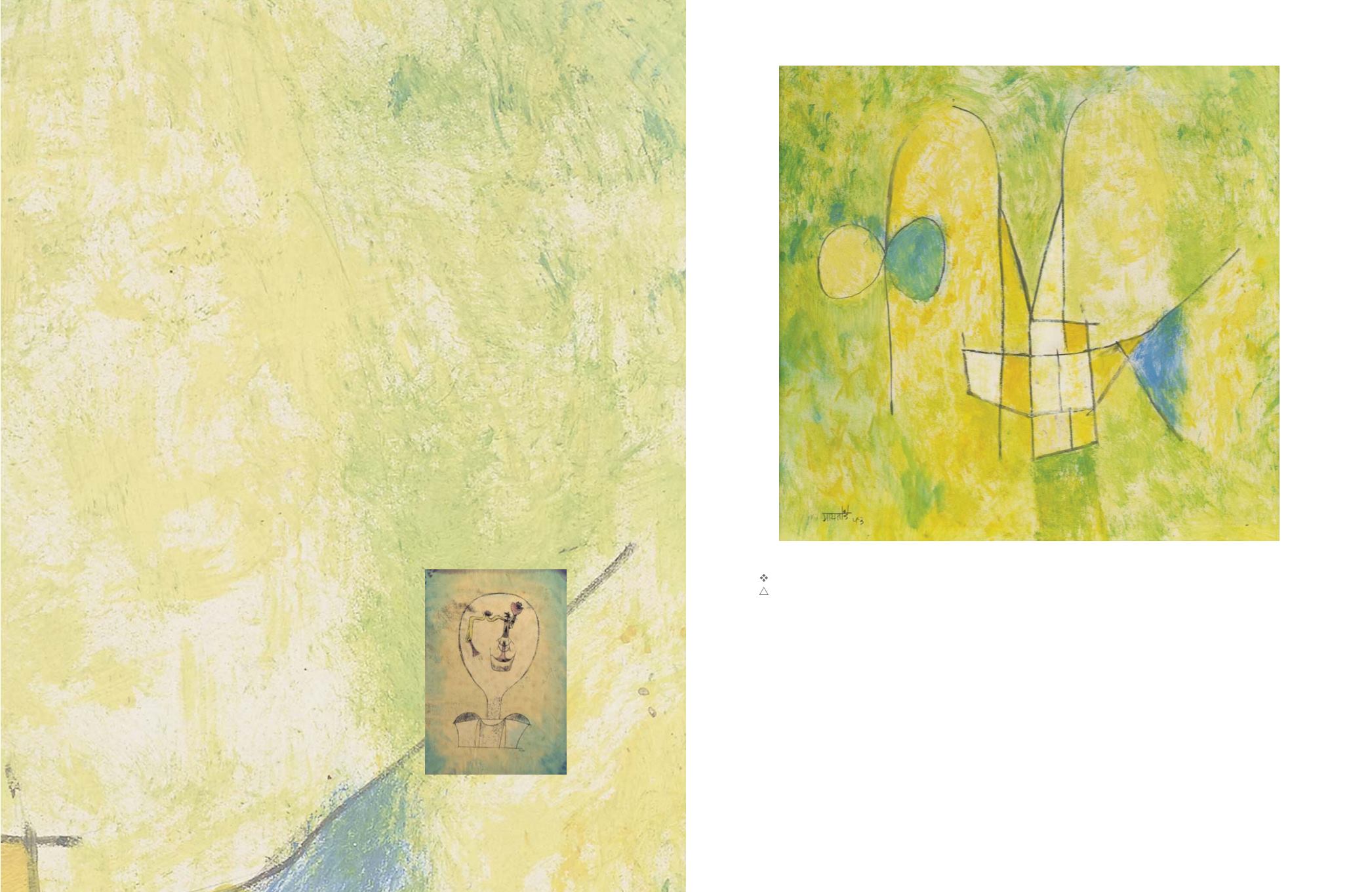

97
P
ainted in 1953, this paperwork is poised at a pivotal
moment in Gaitonde’s oeuvre, when “the need to
establish a meaningful relationship between line and
painted surface,” according to critic Dnyaneshwar Nadkarni, was
one of the artist’s primary concerns. Gaitonde’s work underwent
a critical transformation during this decade, when he turned
from the purely figurative, towards abstraction. Early on this
journey, he encountered the work and writings of Swiss German
artist Paul Klee. Klee employed multiple techniques and mixed
media in his art, including watercolours, to create paintings
which deeply impacted Gaitonde’s own aesthetics. “Alongside
Gaitonde’s early inspiration from the traditions of Indian painting,
the artist also adopted Paul Klee’s expressiveness of line, color
harmonies, and playfulness of spirit as evidenced in various works
from the 1950s.” (Sandhini Poddar, “Polyphonic Modernisms and
Gaitonde’s Interiorized Worldview,”
V.S. Gaitonde: Painting as
Process, Painting as Life,
New York: The Solomon R Guggenheim
Museum, 2014, p. 20) This spirit of playfulness is visible in the
present lot, which was part of the retrospective,
Painting as
Process, Painting as Life
, at the GuggenheimMuseum in New York
in 2014‒15.
“We know that Gaitonde admired the lyrical qualities of Klee’s
line and colour as well as his precision... Speaking about the
impact that Klee had on his work at the time, Gaitonde remarked,
“Rather than saying I was influenced by Paul Klee, it should be said
that I was drawn to the wondrous forms, colour combinations,
beauty of line drawings in his work.”” (Meera Menezes,
Vasudeo
Santu Gaitonde: Sonata of Solitude,
Mumbai: Bodhana Arts and
Research Foundation, 2016, p. 86) Geometry played an important
role in these years, when Gaitonde used shapes and figures that
blurred the line between representation and abstraction.
In an essay on Gaitonde’s work, his friend, architect Narendra
Dengle writes, “Gaitonde himself said that when Paul Klee
became a big influence for him ‘he became Paul Klee.’ Hence
one way would be to look at the master's works, who became
the guiding light for Gaitonde and see the twists, bends, and
interpretations that assumed Gaitonde’s consciousness finding
outlet in his work.” (Narendra Dengle, “Gaitonde: The Spirit of his
Painting,”
Journal of Landscape Architecture, No. 44
, NewDelhi: LA,
Journal of Landscape Architecture, June 2015, p. 99) The present
lot contains the germs of abstraction and deeply philosophical
simplicity that continued to be revealed in the artist’s later work.
Paul Klee
,
The Beginnings of a Smile
, 1921
Source: Wikimedia Commons
62
V S GAITONDE
(1924 ‒ 2001)
Untitled
Signed and dated in Devnagari (lower left)
1953
Watercolour and pastel on paper
14.25 x 14.5 in (36 x 37 cm)
$ 80,000 ‒ 100,000
Rs 51,20,000 ‒ 64,00,000
PROVENANCE:
Acquired directly from the artist
Chowdhury Family Collection
EXHIBITED:
V. S. Gaitonde: Painting as Process, Painting as Life
, New York:
The Solomon R Guggenheim Museum, 24 October 2014 ‒
11 February 2015; Venice: Peggy Guggenheim Collection, 3
October 2015 ‒ 10 January 2016
PUBLISHED:
Sandhini Poddar,
V. S. Gaitonde: Painting as Process, Painting as
Life
, New York: The Solomon R Guggenheim Museum, 2014,
p. 51 (illustrated)
Roshan Sahani and Narendra Dengle,
Vasudeo Santu
Gaitonde: Sonata of Light
, Mumbai: Bodhana Arts and
Research Foundation (forthcoming, illustrated)


















